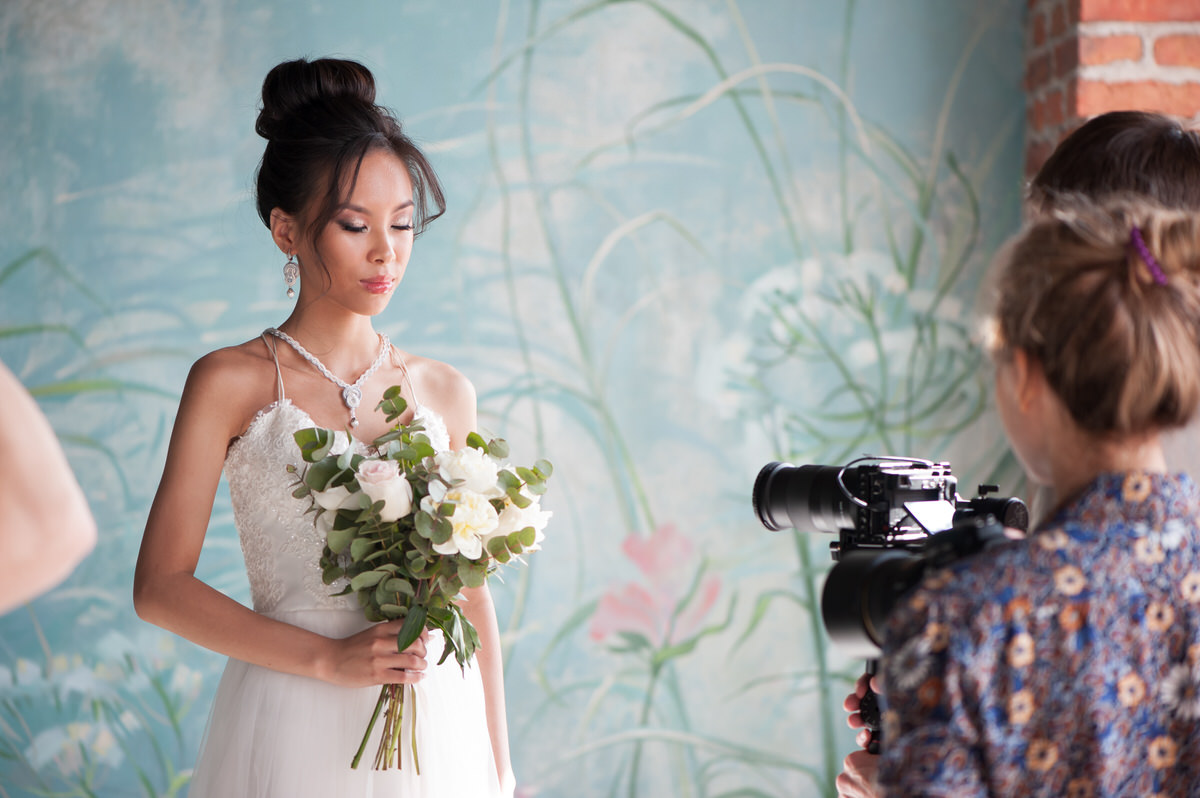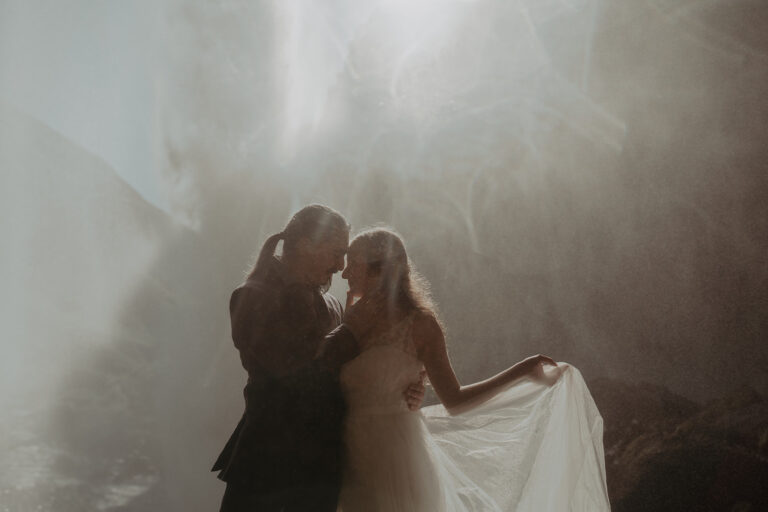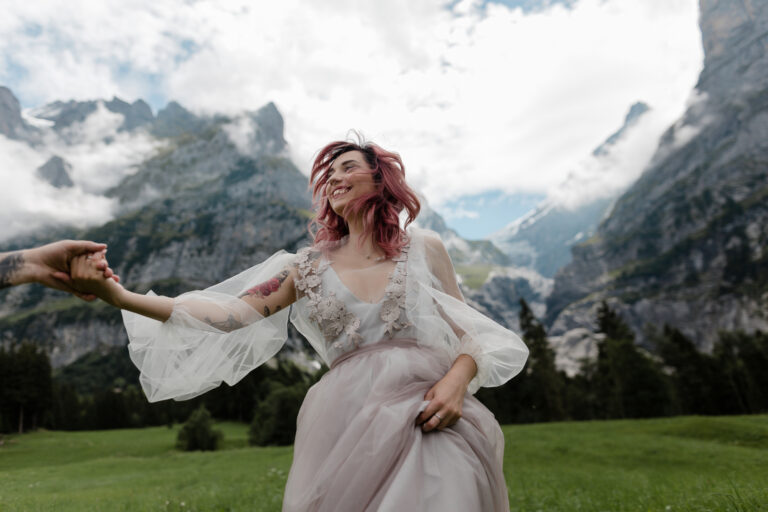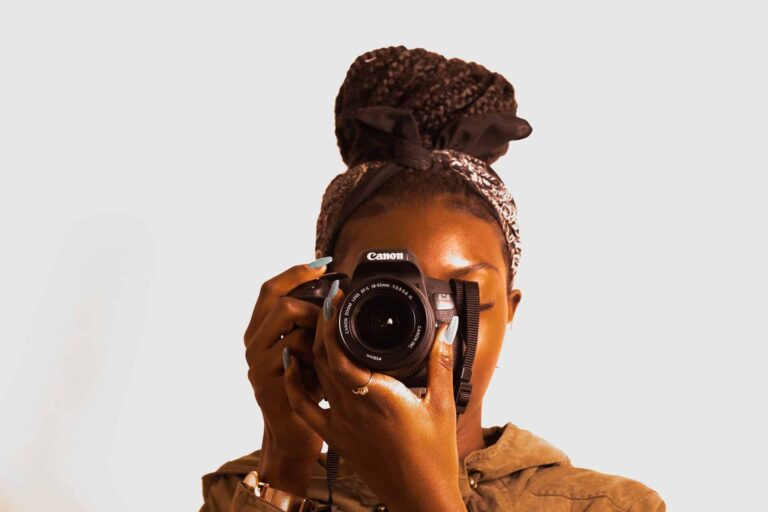A Complete Guide to Choosing Your Wedding Videography Style
Your wedding day is a momentous occasion filled with love, joy, and cherished memories. While wedding photography is a popular choice for capturing these moments, wedding videography offers a unique opportunity to relive the emotions and atmosphere of your special day. With advancements in technology and creative techniques, videographers can now create beautiful films that truly capture the essence of your wedding. But with so many options available, how do you choose the right videography style for your big day?
In this comprehensive guide, we will explore the top trends in wedding videography for the modern couple. From cinematic storytelling to drone footage, we will delve into the different styles and techniques used by videographers to create stunning wedding films. Whether you’re looking for a film that tells a compelling narrative, captures breathtaking aerial shots, or presents a candid and authentic portrayal of your day, we’ve got you covered. So let’s dive in and discover the perfect videography style that will bring your wedding memories to life.
1. Cinematic Storytelling
Cinematic storytelling is a popular trend in wedding videography that combines music, sound effects, and special effects to create a film that tells the story of the couple’s love and their big day in a way that is both emotional and visually stunning. This style goes beyond simply documenting the events of the wedding day and aims to create a cinematic experience that captures the essence and emotions of the couple’s journey.
A skilled videographer will work closely with the couple to understand their vision, style, and preferences. They will use different camera angles, movements, and lenses to create a visually stunning film that reflects the couple’s unique story. The use of music is also crucial in cinematic storytelling. The chosen soundtrack sets the tone, creates the atmosphere, and evokes emotions that resonate with the couple’s style and the mood of the wedding day.
Special effects, such as slow-motion, time-lapse, or tilt-shift, can also be incorporated to add a more cinematic look and create a sense of dreaminess. These effects enhance the visual appeal of the film and make it more visually interesting. The result is a film that is not only a document of the wedding day but a cinematic experience that captures the emotions, beauty, and memories of the special day.
If you love modern wedding films in a cinematic style, the Super Weddings offer is for you.
2. Drone Footage
Drone footage has revolutionized the world of wedding videography, allowing videographers to capture stunning aerial shots that were once unimaginable. Drones equipped with cameras can capture high-quality footage from a bird’s-eye view, providing a new perspective on the wedding day.
One of the biggest advantages of using drones for wedding videography is the ability to capture wide-angle shots of the ceremony and reception. These shots provide a sense of place and context, showcasing the entire venue, surrounding landscape, and the couple as they exchange their vows. The aerial view adds a unique and breathtaking dimension to the film.
Drones also allow videographers to capture creative and unique shots that would be difficult or impossible to achieve with traditional cameras. They can fly over the crowd, providing an aerial view of the guests as they celebrate the couple’s special day. Drones can also capture shots of the couple as they walk down the aisle, providing a unique and intimate perspective.
However, it’s important to note that drone footage is subject to specific regulations and restrictions. Weather conditions and venue permissions are crucial factors to consider when using drones for wedding videography. A licensed and experienced drone operator should handle the equipment to ensure the safety and legality of the footage.
3. Slow-Motion Footage
Slow-motion footage adds a touch of elegance and emotion to wedding films. By capturing moments at a higher frame rate and playing them back at a slower speed, videographers can create a dreamy and ethereal effect that enhances the visual appeal and emotional impact of the film.
The use of slow-motion footage allows videographers to capture the nuances of movement and emotions that might be missed in real-time. A bride’s smile as she walks down the aisle or the groom’s tear as he sees his bride for the first time can be savored and enjoyed in slow-motion, adding depth and beauty to the film.
Slow-motion footage is also perfect for capturing the energy and excitement of the reception. It can showcase the guests dancing, laughing, and celebrating in a way that conveys joy and euphoria. The slow-motion effect adds a layer of artistry and emotion to the film, creating a visually stunning and emotionally evocative experience.
To achieve high-quality slow-motion footage, videographers use high-speed cameras capable of capturing a high number of frames per second. This ensures that the footage is smooth and fluid when played back in slow motion, creating a seamless and captivating visual experience.
4. Live Streaming
Live streaming has become increasingly popular in the world of weddings, allowing couples to share their special day with loved ones who are unable to attend in person. With the help of modern technology and streaming platforms like YouTube, Facebook, or Zoom, couples can live stream their ceremony and reception, enabling guests from around the world to be a part of the celebration.
Live streaming offers an opportunity to include guests who may not be able to attend due to distance, health, or mobility issues. It also allows friends and family who couldn’t make it to the wedding to be virtually present and share in the joyous moments of the day.
In addition to live streaming the entire wedding, couples can choose to stream specific moments like the ceremony or the speeches. This flexibility allows them to customize the live stream experience and ensure that everyone feels included in the celebration.
Live streaming also provides a virtual guestbook where viewers can leave comments and messages for the couple. This creates an interactive and engaging experience, allowing guests to express their love and well wishes, even from afar. It’s important to plan and coordinate the logistics of live streaming with the wedding planner and venue to ensure a stable internet connection and a dedicated person to manage the process.
5. Documentary Style
The documentary style of wedding videography focuses on capturing the day as it unfolds naturally, without elaborate setups or staged moments. This approach results in an authentic and candid film that tells the story of the couple’s big day in a natural and unobtrusive way.
Documentary-style videographers aim to capture real emotions, genuine interactions, and the overall atmosphere of the event. They use a combination of wide shots, close-ups, and medium shots to create a visually interesting film that reflects the essence of the day. Natural sound, such as vows, speeches, and ambient noises, is incorporated to enhance the authenticity and atmosphere of the film.
One of the advantages of the documentary style is its ability to capture genuine moments of joy, laughter, and tears that make the wedding day truly special. The resulting film is candid and true, accurately reflecting the couple’s personalities and the emotions of the day.
This style of videography is less invasive, as the videographer aims to blend into the background and capture the events as they naturally unfold. By doing so, they ensure that the couple and their guests can fully immerse themselves in the celebration without feeling overly conscious of the camera’s presence.
6. Use of Multiple Cameras
Using multiple cameras is a technique employed by videographers to capture different angles and perspectives of the wedding day. By strategically placing multiple cameras throughout the venue, videographers can ensure that no important moment is missed and create a visually dynamic film that tells a comprehensive story.
One camera may be used to capture wide shots of the ceremony and reception, providing a panoramic view of the entire event. Another camera can focus on close-ups of the couple and their guests, capturing intimate moments and emotions. The use of multiple cameras adds depth and visual interest to the film, making it more engaging and captivating.
While the use of multiple cameras offers numerous advantages, it also adds complexity to the wedding day logistics. Coordination with the wedding planner and venue is essential to ensure that the cameras are strategically placed and operated by experienced professionals. With careful planning and execution, multiple cameras can elevate the quality and storytelling capabilities of the wedding film.
7. Social Media Friendly Edits
In the age of social media, couples are increasingly sharing their special moments online. Videographers have adapted to this trend by creating social media-friendly edits, which are shorter versions of the full wedding film specifically tailored for sharing on platforms like Instagram, Facebook, and TikTok.
Social media-friendly edits are designed to grab attention quickly and engage viewers in a short span of time. They often feature highlight moments, stunning visuals, and catchy music. These edits allow couples to share their wedding day with friends and family in a concise and visually appealing way.
Social media-friendly edits are perfect for sharing snippets of the wedding day and creating excitement among followers. They can be easily shared across platforms, generating likes, comments, and shares from friends and family who couldn’t be present on the day. These edits serve as teasers, enticing viewers to seek out the full wedding film for a more comprehensive experience.
The key to creating effective social media-friendly edits is to condense the essence and highlights of the wedding day into a visually captivating and emotionally resonant package. By working closely with the videographer, couples can ensure that the final edit aligns with their vision and captures the essence of their special day.
8. Virtual Reality (VR) and 360-Degree Videos
Virtual Reality (VR) and 360-degree videos are innovative technologies that have made their way into the world of wedding videography. These immersive experiences allow couples and their loved ones to relive the wedding day in a whole new way, transporting them back to the moment as if they were there.
VR technology creates a simulated environment that can be explored using a VR headset. By capturing the wedding day in 360 degrees, videographers can create immersive films that allow viewers to look around and feel fully present in the moment. From the ceremony to the reception, every detail can be experienced from all angles, creating a truly unique and unforgettable experience.
360-degree videos, on the other hand, can be viewed on various platforms and devices, such as smartphones, tablets, or computers. Viewers can interact with the video, swiping or moving the device to explore different perspectives. This technology provides a captivating and interactive way to relive the wedding day, allowing viewers to choose what they want to focus on and explore at their own pace.
VR and 360-degree videos offer a level of immersion and interactivity that traditional wedding films cannot match. They provide an opportunity to relive the emotions, sights, and sounds of the wedding day, creating a truly unforgettable experience for couples and their loved ones.
9. Destination Wedding Videography
Destination weddings are becoming increasingly popular, as couples seek unique and picturesque locations to exchange their vows. Destination wedding videography goes beyond capturing the wedding day itself and aims to showcase the beauty and charm of the chosen destination.
Videographers specializing in destination weddings are experienced in capturing the essence of the location, incorporating its natural landscapes, architecture, and cultural elements into the film. They understand the importance of showcasing not only the couple’s love story but also the backdrop against which it unfolds.
Destination wedding videography offers a chance to create stunning and cinematic films that transport viewers to breathtaking locations around the world. From tropical beaches to ancient ruins, each destination presents unique opportunities for videographers to capture the magic and romance of the day.
When choosing a videographer for a destination wedding, it’s crucial to select someone who has experience in that particular location. They should be familiar with the venue, lighting conditions, and local regulations to ensure a seamless and successful filming experience.
10. Interactive and Personalized Videos
Interactive and personalized videos are a growing trend in wedding videography, offering couples a unique opportunity to create an engaging and customized experience for themselves and their guests. These videos go beyond traditional linear storytelling and allow viewers to actively participate and shape their viewing experience.
Interactive videos can include clickable elements, such as hotspots or buttons, that lead to additional content or allow viewers to make choices throughout the film. For example, viewers can choose to watch different angles of the ceremony, explore behind-the-scenes footage, or listen to personalized messages from the couple.
Personalization is an essential aspect of interactive videos. Couples can incorporate their own photos, videos, and messages into the film, creating a truly personalized experience for themselves and their loved ones. This level of customization adds a unique touch and makes the film feel more intimate and special.
Interactive and personalized videos are best experienced through digital platforms or dedicated apps, where viewers can interact with the content on their own devices. These videos provide an engaging and memorable experience that allows couples to share their love story in a completely new and interactive way.
11. Artistic and Experimental Styles
Artistic and experimental styles in wedding videography offer couples the opportunity to create films that are truly unique and reflect their individuality. These styles push the boundaries of traditional wedding videography and embrace unconventional techniques, visual aesthetics, and storytelling approaches.
Artistic videography often incorporates elements of fine art, exploring light, composition, and color in a way that creates visually stunning and thought-provoking films. Experimental videography, on the other hand, challenges the norms and conventions of wedding storytelling, using abstract visuals, non-linear narratives, and avant-garde techniques to create a truly original and distinctive film.
Couples who gravitate towards artistic and experimental styles are often drawn to the idea of creating something that is truly one-of-a-kind. They are open to exploring new ideas, collaborating with videographers, and pushing the boundaries of what is traditionally expected in wedding videography.
Artistic and experimental styles require a skilled videographer who understands the couple’s vision and has the technical expertise to execute it effectively. The result is a film that is not only visually captivating but also thought-provoking and emotionally resonant, creating a lasting impression on viewers.
12. The Importance of Professional Editing
While the style and techniques used during filming are crucial, professional editing is equally important in creating a high-quality and emotionally impactful wedding film. Editing is where the raw footage is transformed into a cohesive and engaging narrative that captures the essence of the wedding day.
Professional editors possess the technical skills and artistic vision to bring the footage to life. They carefully select and arrange the best moments, synchronize audio and visuals, and add music and sound effects to enhance the emotional impact of the film. Their expertise in color grading, pacing, and storytelling ensures a polished and professional final product.
The editing process involves not only assembling the footage but also shaping the narrative and emotional arc of the film. Editors work closely with the couple to understand their vision, preferences, and the story they want to tell. They take into consideration the style, mood, and overall atmosphere of the wedding day to create a film that reflects the couple’s unique journey.
Investing in professional editing ensures that the wedding film is a true reflection of the couple’s love story and the emotions felt on the day. It elevates the quality of the footage, enhances the visual and emotional impact, and creates a film that will be cherished for a lifetime.
Choose your favourite wedding videography style
Choosing the right videography style for your wedding is an important decision that will shape how you remember and relive your special day. With the wide range of styles and techniques available, it’s essential to consider your personal preferences, the atmosphere you want to create, and the emotions you want to evoke.
From cinematic storytelling to drone footage, slow-motion shots to live streaming, each videography style offers a unique way to capture and preserve the memories of your wedding day. Whether you prefer a film that tells a compelling narrative, captures breathtaking visuals, or presents a candid and authentic portrayal, there is a style that’s perfect for you.
By working closely with a skilled and experienced videographer, you can bring your vision to life and create a wedding film that truly reflects your love story. Their expertise, combined with professional editing, will ensure that your film is a cherished memento that captures the essence and emotions of your special day.
So, take the time to explore the different styles, discuss your preferences with videographers, and choose the style that resonates with you. Your wedding film will be a lasting testament to your love and a treasured keepsake that you can revisit and share with future generations.



